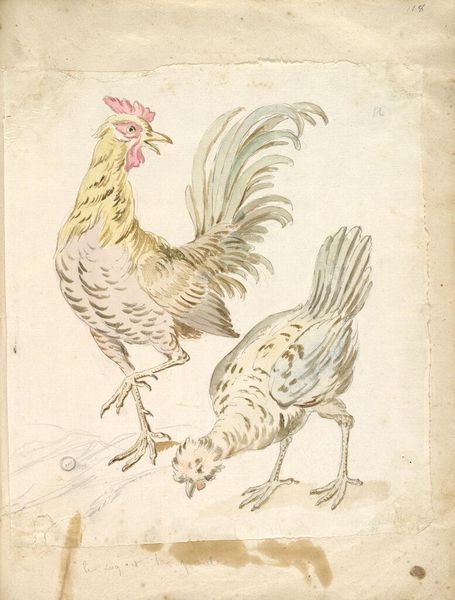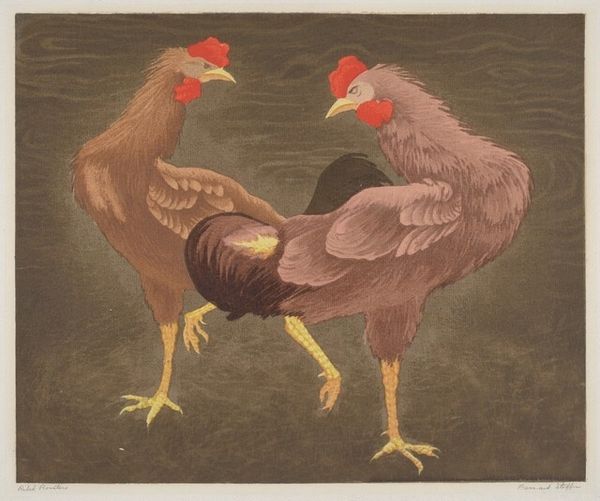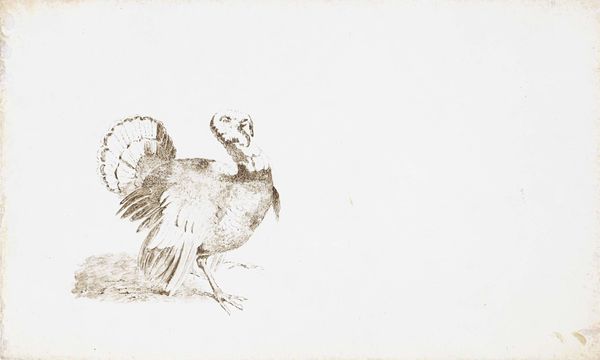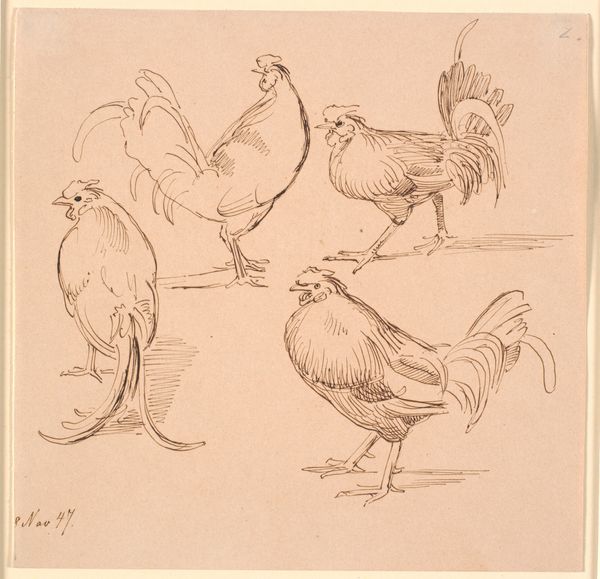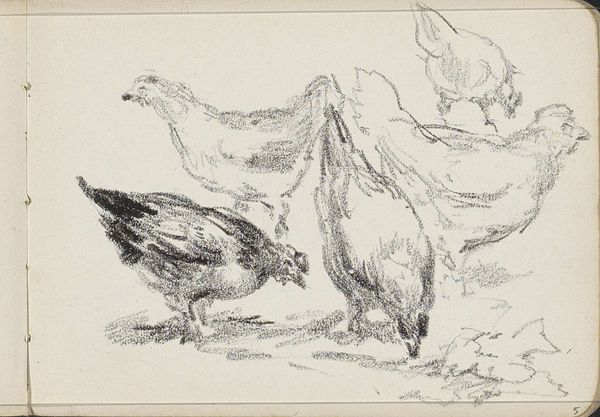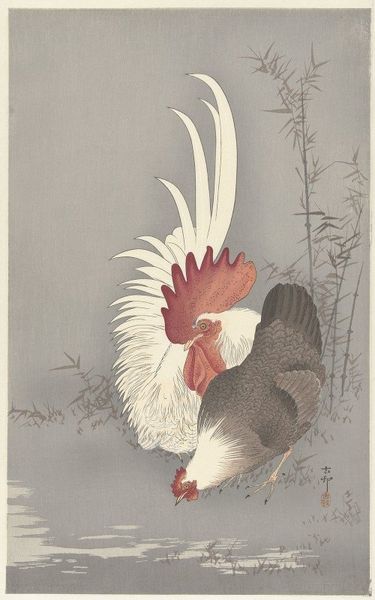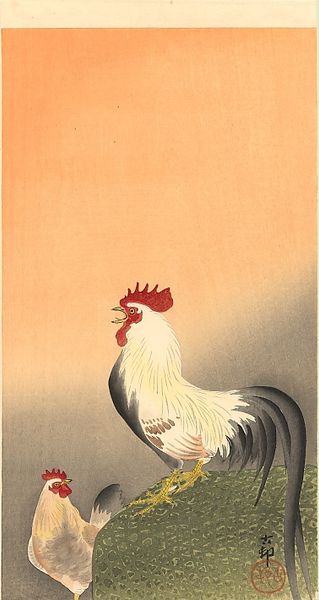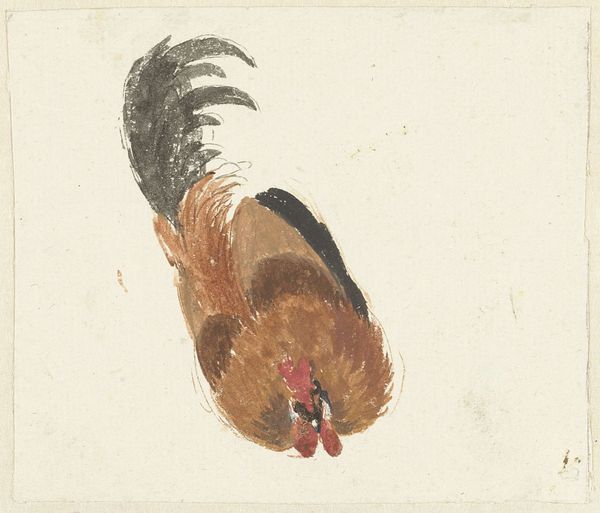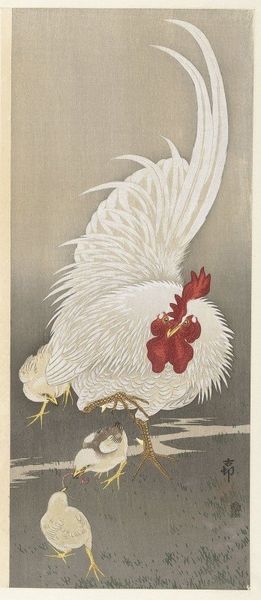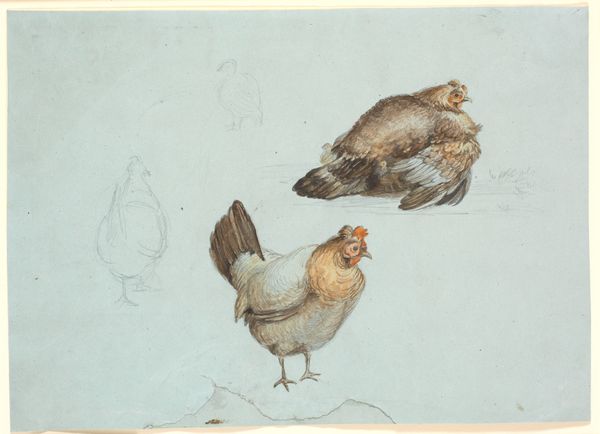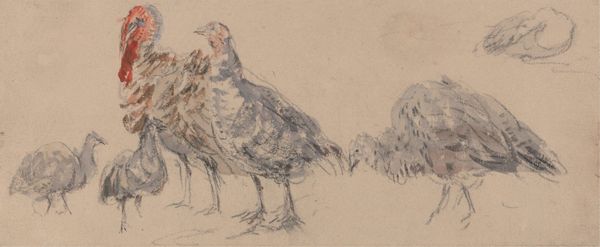
#
light pencil work
#
quirky sketch
#
pencil sketch
#
bird
#
personal sketchbook
#
sketchwork
#
sketchbook drawing
#
watercolour illustration
#
sketchbook art
#
fantasy sketch
#
initial sketch
Dimensions: 25 x 33 cm
Copyright: Public domain US
Editor: This is "Two Roosters" by Pablo Picasso, from 1905. It looks like a quick pencil and watercolor sketch. The composition is really interesting; the roosters are close together, almost overlapping, but their contrasting line work and shading really define them as two separate forms. How do you read this piece? Curator: Indeed, the formal qualities of this sketch are quite compelling. Note how Picasso employs contrasting techniques—delicate washes versus dense hatching—to articulate the two roosters. What strikes you about the differing treatment of line? Editor: Well, the rooster on the left is all these dense vertical lines, giving it a weighty, almost solid form. While the rooster on the right has much softer, blended lines, making it look more ethereal, maybe even less defined. Curator: Precisely. Consider also how Picasso directs our gaze. The darker tonality and stark lines of the left rooster command our immediate attention. However, the lighter, softer rendition of the right rooster encourages a lingering appreciation of form. What effect might that contrast achieve? Editor: Perhaps the difference emphasizes a sense of interaction between the two. It feels less like observation, and more like a study of form that might then be incorporated elsewhere. Curator: An astute observation. Note also the economical use of line to imply form and texture. The red crests are indicated with simple daubs, contrasting with the more considered approach to the body plumage. Ultimately, Picasso showcases how limited application of materials results in visual clarity and a fascinating aesthetic result. Editor: So, looking at the forms and the materiality opens it up. Thanks, that’s really given me a different way to see Picasso's work. Curator: Indeed. Through this analytical observation we witness art not simply for its subject matter, but as a dynamic orchestration of line, texture, and tone.
Comments
No comments
Be the first to comment and join the conversation on the ultimate creative platform.
